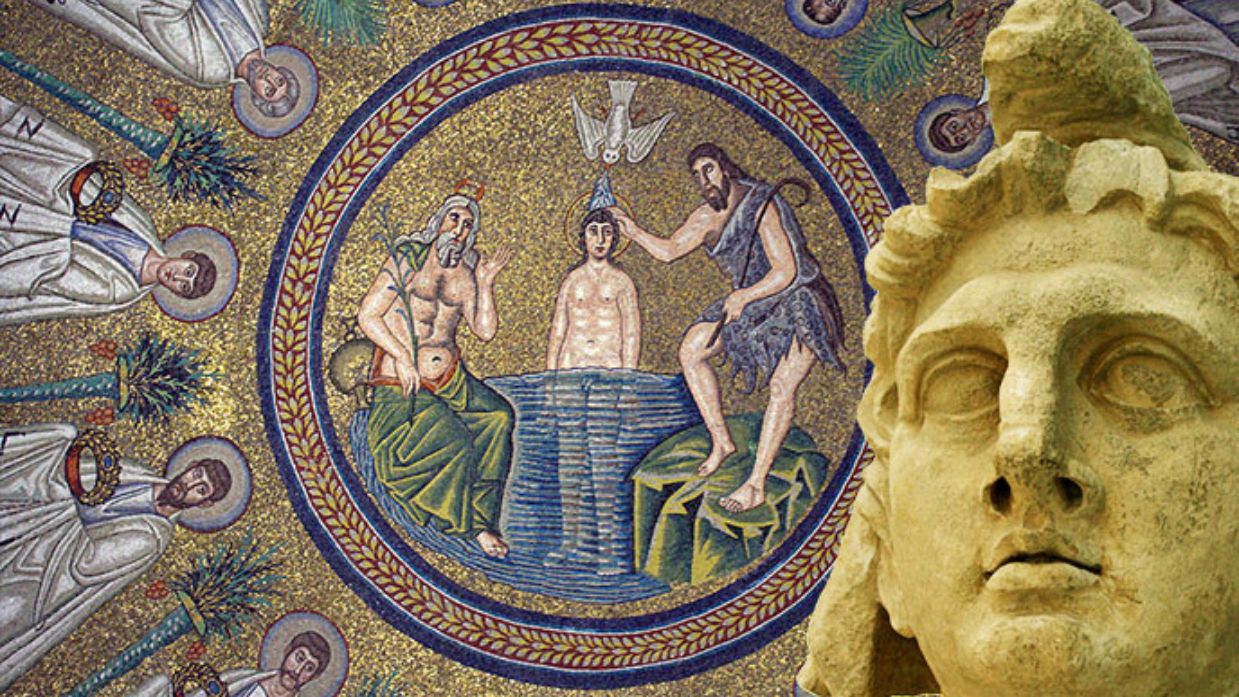In the bustling hub of the Roman Empire throughout the initial century AD, a nascent and enigmatic religious movement commenced its development. Mithras, a deity originating from Indo-Iranian Mithra, was worshipped. This occult organization with unfathomable cosmic wisdom coexisted alongside early Christianity, contributing to its mystique. But by the 5th century, Mithraism had vanished into obscurity, leaving behind an intriguing puzzle. Today, the Musée Saint-Raymond in Toulouse, France, sheds light on this enigmatic cult in the second of a three-part collaborative European exhibition series exploring the ‘mysteries of Mithras.’
The Mithraic Universe
As visitors step into the exhibition hall at Musée Saint-Raymond, they are transported into the entrancing world of Mithraism. The dimmed lights and immersive setting mimic the entrance to a mithraeum, the cave-like sanctuaries unique to the cult of Mithras. Flanked by statues of Cautes and Cautopates, the torch-bearing guardians of the temple, visitors are plunged into the secretive underground realm inhabited by Mithras’ devoted followers.

Deciphering the Cult
Unlike many other religions of the time, the followers of Mithras left behind no literary sources, making modern understandings of their beliefs reliant on archaeology and ancient texts. Yet, these texts, often authored by early Christians hostile to paganism, offer a skewed perspective. One prominent scholar in Mithraic studies, Franz Cumont, believed Mithraism was a Roman adaptation of an Iranian state religion, an interpretation that has since been challenged by contemporary scholars like Lucinda Dirven.
Today, it is widely accepted that the Roman cult of Mithras had little connection to the ancient Indo-Iranian deity Mithra, despite their shared name.
The Myth of Brutal Rituals
While there is no archaeological evidence to suggest that Mithraic followers reenacted the bull-killing, historical accounts hint at a cult steeped in secrecy and perhaps brutality. Stories of violent initiation ceremonies, including blindfolding, handcuffing, and cold-water immersion, have circulated. However, these tales, often narrated by early Christian critics, remain unconfirmed by archaeological findings.

Hierarchies and Diversity Within Mithraism
Mithraism maintained a strict hierarchy with seven grades, resembling the Roman army’s structure. While it is commonly perceived as a soldiers’ religion due to these similarities, evidence suggests that the cult was open to civilians as well. In places like Rome and Ostia, followers included tradesmen, bureaucrats, and even freed slaves who previously held administrative positions.
For women, the role within Mithraism remains mysterious. The absence of female-authored dedications or inscriptions in mithraea has led some to believe that the cult excluded women. However, recent findings and perspectives challenge this notion, suggesting that women might have engaged in informal Mithras-worship outside the traditional mithraea.
The Decline of Mithraism
Mithraism was prominent throughout the Mediterranean, but it declined quickly. Christianity becoming the official religion of the Roman Empire is thought to have caused the fall. Some historians blame the cult’s downfall to diminishing excitement and a dependence on charismatic leaders who could no longer maintain society’s togetherness.
The Future of Mithraic Studies
The Musée Saint-Raymond’s exhibition, “The Mystery of Mithras: exploring the heart of a Roman cult,” has earned praise from experts for its role in advancing our understanding of Mithraism. Scholars are shifting their focus from reconstructing a universal narrative of Mithraism to examining its local expressions and how they intersected with other cults. With each new discovery and perspective, the enigmatic cult of Mithras continues to reveal its secrets.
As the exhibition in Toulouse captivates visitors with its collection of Mithraic artifacts, it invites us to embark on a journey into the heart of an ancient Roman cult. While the mysteries of Mithras may never be fully unveiled, the ongoing research and evolving perspectives on this enigmatic religious movement ensure that its secrets will continue to captivate scholars and enthusiasts alike. From Toulouse, the Mithras collection will travel to the Archäologisches Museum Frankfurt, promising more discoveries and insights into this fascinating chapter of Roman history.

Also Read: The Unthinkable Turnaround: From Overpopulation to Underpopulation









Leave feedback about this